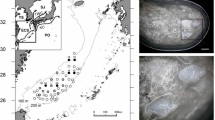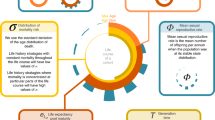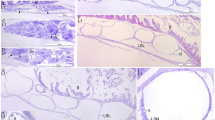Abstract
IN NATURE some time ago (115, 155; 1925) Dr. Bidder raised again the interesting fundamental question of the cause of normal death in aquatic animals, and stated that so far as he knew there was no evidence of any marine animals dying a natural death, except those whose life is ended by the winter or the summer. Later, the same writer, after reviewing earlier discussions (Proc. Linn. Soc., 1925, p. 17), argued that we have no reason to suppose that aquatic animals, such as plaice, carp, and sea anemones, ever die except by violence. It was stated that though both man and plaice, for example, increase by approximately geometrical progression in weight until the age of puberty, man after the age of twenty-eight declines in (significant) weight and must die; whereas plaice continue to grow indefinitely by positive increments, from which fact it is deduced that life in plaice—and similar animals—may be eternal. The renewal of interest in this subject is already producing practical results, and it is worth while discussing some other aspects of the problem.
This is a preview of subscription content, access via your institution
Access options
Subscribe to this journal
Receive 51 print issues and online access
$199.00 per year
only $3.90 per issue
Buy this article
- Purchase on Springer Link
- Instant access to full article PDF
Prices may be subject to local taxes which are calculated during checkout
Similar content being viewed by others
Author information
Authors and Affiliations
Rights and permissions
About this article
Cite this article
ORTON, J. Reproduction and Death in Invertebrates and Fishes. Nature 123, 14–15 (1929). https://doi.org/10.1038/123014a0
Issue Date:
DOI: https://doi.org/10.1038/123014a0
This article is cited by
-
Reproductive strategies of coastal marine fishes in the tropics
Environmental Biology of Fishes (1978)
-
Changes in chemical composition during growth ofClarias batrachus (Linnaeus)
Proceedings Animal Sciences (1978)
Comments
By submitting a comment you agree to abide by our Terms and Community Guidelines. If you find something abusive or that does not comply with our terms or guidelines please flag it as inappropriate.



